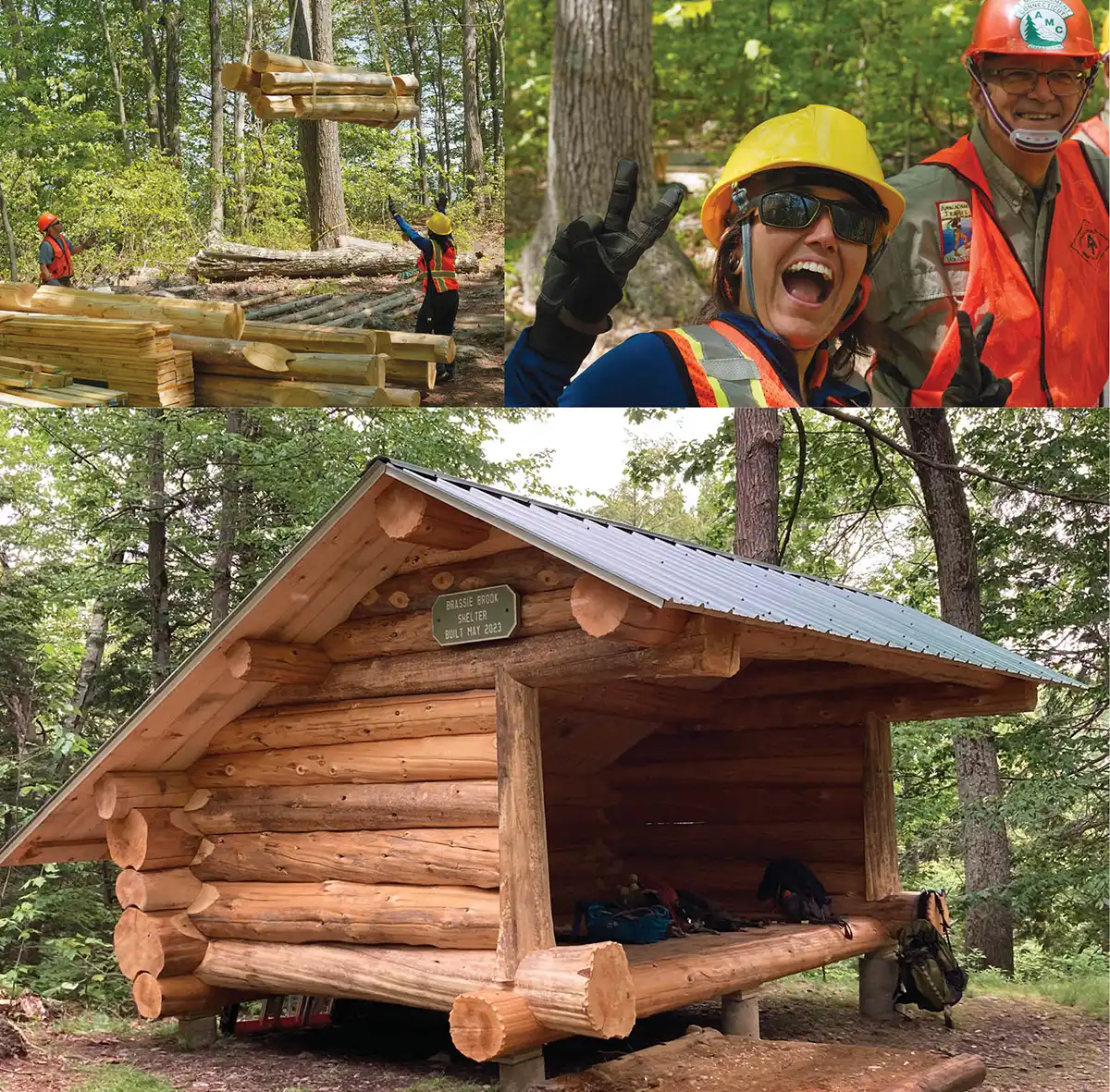
Perhaps that is as it should be. The Appalachian Trail is meant to be a simple footpath through the woods. However, with an ever-changing environment and increased visitor use, maintaining the A.T. is far from simple.
In fact, it takes thousands of people from dozens of organizations, agencies, and other entities to ensure the Trail remains a world-class outdoor recreational experience. I recently had the chance to see this complex cooperative management system in action while overseeing the replacement of two popular shelters in Connecticut.
After 40 years of service, the original Brassie Brook and Riga shelters had suffered from the cumulative impacts of weather, a small fire, pests, and general wear-and-tear. Volunteers with the AMC–CT Appalachian Trail Club recognized that the shelters were nearing the end of their useful life, and the ATC agreed they should be replaced.

The most dramatic part of the project came when airlifting the construction materials to the shelter sites. But first, we had to find locations for the airlifts that would minimally impact the hiker experience and the environment. This meant arranging for my ATC colleagues Marian Orlousky and Dan Hale to conduct a botanical survey to make sure we weren’t threatening any rare or endangered species. I also secured the assistance of a National Park Service archaeologist, Joel Dukes, to scout the site for tribal or cultural resources that could be vulnerable.
Finally, after 24 separate airlifts of project material loads, each weighing approximately 7,000 pounds, construction began at the two sites in April and May 2023. Volunteers once again hiked two miles in with tools to construct the new shelters. The new Brassie Brook shelter opened in June, followed by Riga the next month. In all, it took almost five years and over 1,200 hours of volunteer labor to remove and replace the shelters — which are just two out of more than 250 along the Trail.
There’s a saying that it takes a village to raise a child. Clearly, it takes a grassroots effort and a host of volunteers and partners to raise an A.T. shelter. I am forever grateful for the past, current, and future generations of people who dedicate their time and energy to protecting and maintaining this one-of-a-kind public resource.